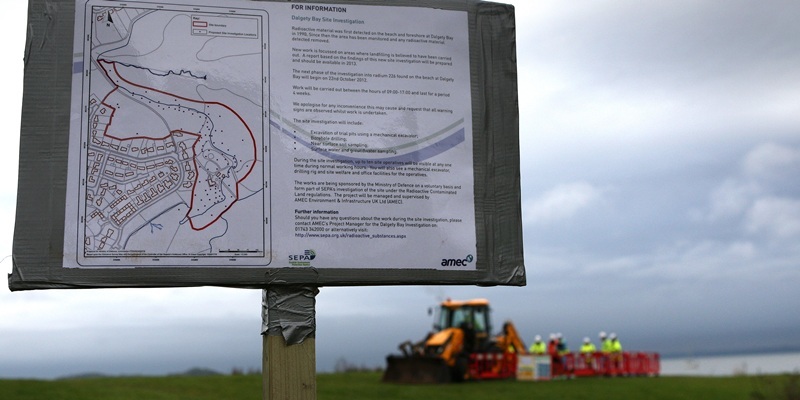Work to finally find out the scale of radiation on Dalgety Bay beach has started.
While Ministry of Defence (MoD) contractors have begun drilling 90 boreholes to determine the source of the radioactive particles first found on the foreshore more than 20 years ago, local community council chairman Colin McPhail remains optimistic next year’s target for remediation work could still be met.
Earlier this year, as the area was under threat of becoming the first designated radioactive contaminated land in the UK, the MoD agreed to carry out the investigation into the source of the problem, believed to come from radium paint used to coat the luminous dials of Second World War aircraft based at nearby Donibristle.
Up until now particles have been identified when they were either on or near the surface. However, the new extensive excavation will see 6.5ft-deep and 2ft-wide boreholes and test pits gouged out by mechanical diggers to gain more insight into the extent of the contamination.
What is found during the work, which will take from three to five weeks, will then form recommendations on how the problem is tackled.
Dr Paul Dale, a radioactive substances specialist at the Scottish Environment Protection Agency (Sepa), said: ”The boreholes will go down to bedrock, so we will be seeing what’s in there and determining what contamination is there that way we can have a map of the area showing where contamination is and isn’t.
”Once that is found out, that can inform the management arrangements whether it is only in a little corner or if it is distributed over a larger area.
”This particular physical examination is the most comprehensive and robust, and we are here to ensure it is fit for purpose.”
It will be tied in with aerial shots of the area to bring together an overall picture of the site and how it has developed, he added.
He hopes the latest work will bring 20 years of ”treating the symptoms” to a close, particularly with a big step change in the last year with more particles and those showing higher radioactivity being uncovered.
Mr McPhail welcomed the work, saying: ”It is a bit dim at the moment, but there is a light coming at the end of the tunnel.”
He said he hoped the remedial work would still be carried out by May 2013.
